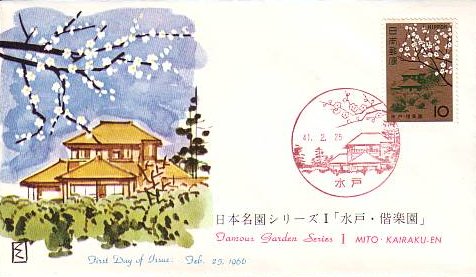
Japan in February
February 3rd or 4th: Setsubun
Japan is a country with four separate seasons and the term setsubun originally referred to the days marking the change from one season to the next but now only the day before risshun is called by that name.
On the night of setsubun many households perform mame-maki, or a bean-throwing ceremony. They fill a small measuring cup with roasted soybeans and throw the beans around the room shouting Oni wa soto! Fuku wa uchi!" which means, roughly, "out with the goblins and in with fortune!" They also open windows and throw beans outside.
When they are done with that they then eat the same number of beans as their age which supposedly will allow them to be free of sickeness during the coming year.
February 4th or 5th: Resshun
Risshun is the first day of spring in the traditional Japanese calendar. No special events are held on this day, though.
The time between the end of January and Risshun is generally the coldest time of the year.
February 8: Hari-kuyo
This is the day when Buddhist masses are sung for needles broken during the past year since it is thought that the needles' lives were sacrificed in service.
A small three-step altar is set up and hung with a sacred rope and strips of cut white paper which indicate a sanctified area. On the top step are offerings of fruit and sweet cakes. On the middle step is a cake of tofu and on the bottom step are various sewing accessories.
February 11: National Foundation Day
This originates in a celebration marking the enthronement of the first Japanese emperor, Emperor Jimmu. After World War II the holiday was abolished, basically for political reasons, but it was reestablished in 1966 due to popular support.
February 14: Valentine's Day
Valentine's Day differs considerably from our Western version. In the west boys and men give their girlfriends/wives/etc. boxes of chocolate and/or flowers.
In Japan, on the other hand, it is the females who give the chocolates.
There are also two types of giving. One is honmei chocolate which is given to true sweethearts of the girls and there is "giri" or obligation chocolate given to male classmates, colleagues at work and friends.
February 16: Bonden
This is at the Asahiokayama-jinja Shrine , Yokote-shi, Akita. Special shrine decorations called bonden, each carried by 20 to 30 young men are taken to a shrine for consecration. Rival groups shake and spin the bonden and compete to become the first group to set them in place.
The bonden consists of three meter long poles wound with cloths of five different colors and some form of decoration at the top.
February 16: Bonden
This is the same as above but takes place at Izuyama-jinja Shrine, Omagari-shi, Akita.
February 21, nearest Sunday to this date
Otaue-Matsuri at the Kagami-tsukuri-jinja Shrine, Twaramoto-cho, Nara. Another rice-planting festival with its own special dance.

Main Index
Japan main page
Japanese-American Internment Camps index page
Japan and World War II index page
|